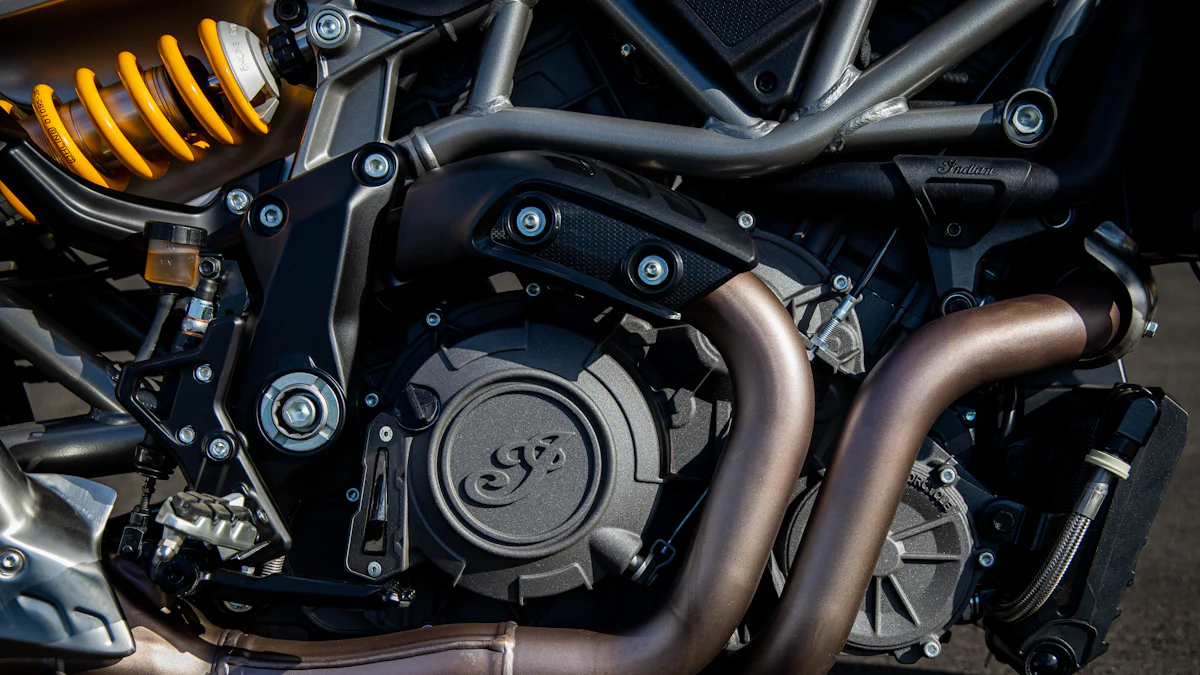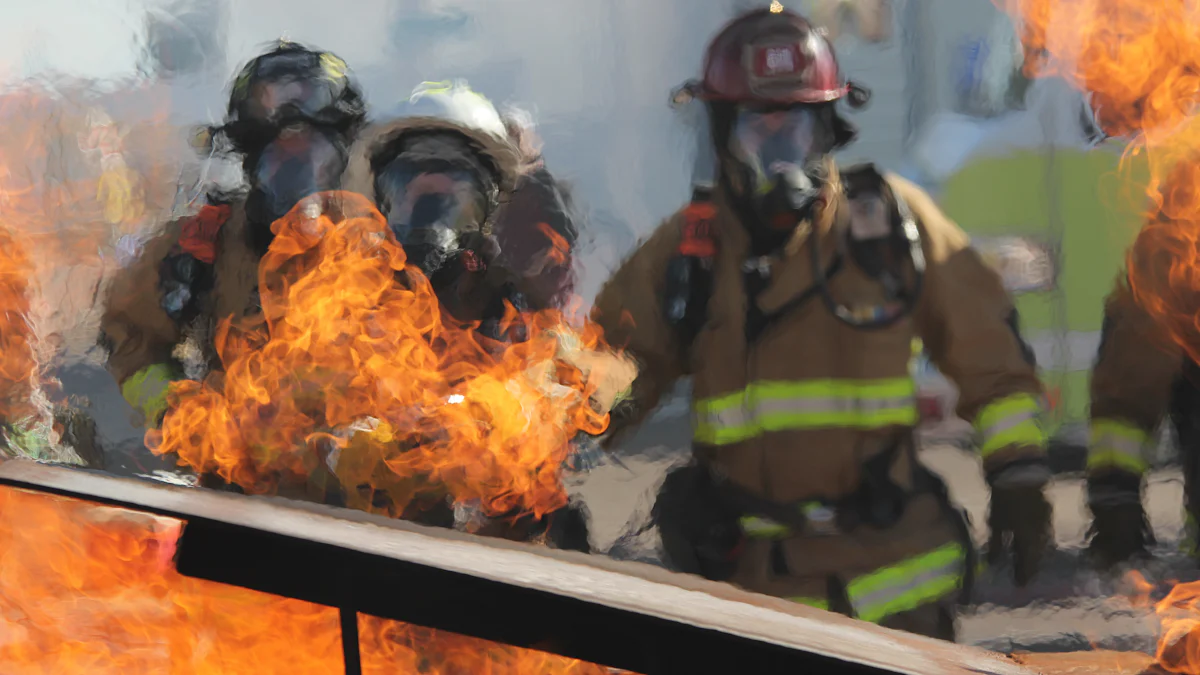
Maintaining a vehicle is crucial to ensure safety and longevity. Understanding the potential risks of oil leaks is paramount. In this blog, we will delve into five significant fire hazards resulting from oil leaking onto the exhaust manifold dangerous. By identifying these risks early on, car owners can take proactive measures to prevent catastrophic consequences related to the Engine exhaust manifold.
Exhaust Manifold and Fire Risks

When considering the Engine exhaust manifold in a vehicle, it is essential to comprehend its significance. The Function of the Exhaust Manifold is to gather exhaust gases from multiple cylinders and combine them into one pipe. This process allows for efficient emission of these gases through the exhaust system. However, like any component, Exhaust components can face issues over time.
Common problems associated with Exhaust components include cracks or leaks in the manifold. These issues can arise due to extreme temperatures or prolonged use without proper maintenance. When such concerns occur, they can lead to detrimental consequences for the engine’s performance and overall safety.
The occurrence of engine oil leaks is a common challenge faced by many vehicle owners. Understanding the Causes of Oil Leaks is crucial to address this issue promptly. Factors such as worn gaskets, loose connections, or excessive pressure can contribute to oil leakages in the engine compartment.
Recognizing the Symptoms of Oil Leaks is vital for early detection and prevention of potential hazards. Some indicators include visible oil puddles under the vehicle, burning oil smell inside the cabin, or a decrease in oil levels without an apparent cause. Ignoring these signs could result in severe damage to the engine and surrounding components.
When oil leaking onto exhaust manifold dangerous, immediate fire risks become a significant concern. The combination of hot exhaust temperatures and flammable substances like engine oil creates a hazardous environment. In such scenarios, even a small spark can ignite the leaked oil, leading to potential fires that endanger both the vehicle and its occupants.
The immediate threat posed by these fire risks emphasizes the importance of regular maintenance and inspection practices for all car owners. By addressing issues related to oil leakages, individuals can mitigate long-term damages that may impact their vehicle’s performance and safety on the road.
Fire Risk 1: Ignition Due to High Temperatures

When considering the potential fire risk associated with oil leaks, understanding how high temperatures play a crucial role in ignition is paramount. The interaction between engine oil and elevated temperatures can lead to catastrophic consequences if not addressed promptly.
How High Temperatures Cause Fires
Temperature Thresholds
- Excessive heat, often generated by the exhaust manifold, can reach levels that surpass the ignition point of engine oil.
- When temperatures exceed the threshold at which oil ignites, the risk of a fire hazard significantly increases.
Real-world Examples
- Instances where vehicles have experienced fires due to oil leaks onto exhaust manifolds serve as real-world reminders of this danger.
- Without proper maintenance and vigilance, these scenarios can escalate quickly, posing risks to both the vehicle and its occupants.
Preventing High-Temperature Ignition
Regular Maintenance
- Consistent inspection of the engine components, including the exhaust system, is crucial in identifying potential issues before they escalate.
- Timely repairs and replacements of damaged parts can prevent situations where oil leakages go unnoticed, reducing the risk of fires.
Using Quality Parts
- Opting for high-quality components, such as those offered by reputable manufacturers like Werkwell, can enhance the durability and safety of your vehicle.
- Investing in reliable products like the Werkwell Harmonic Balancer ensures that critical parts function optimally, minimizing risks associated with engine oil leaks.
Fire Risk 2: Smoke and Smell Hazards
Identifying Smoke and Smell from Oil Leaks
Visual Indicators
When oil leaks occur, visual indicators play a crucial role in detecting potential hazards. Look for oil stains under the vehicle or near the engine compartment. These stains often indicate a leakage issue that requires immediate attention. Additionally, observe any smoke emanating from the engine area, as it could signify oil burning on hot surfaces.
Olfactory Indicators
The sense of smell can also help identify oil leaks. If you notice a strong burning odor, especially when driving or after parking the vehicle, it might be due to engine oil dripping onto the exhaust manifold. This distinct smell is a clear indication of potential fire risks associated with oil leakages.
Addressing Smoke and Smell Issues
Immediate Actions
Upon detecting smoke or unusual smells related to oil leaks, take prompt action to prevent further complications. Firstly, ensure your safety by pulling over to a safe location and turning off the engine immediately. Avoid opening the hood if there is visible smoke to prevent any potential flames from reaching you.
Next, assess the extent of the issue by checking for visible signs of oil leaks around the engine components. If possible, try to identify the exact location of the leakage to provide accurate information to mechanics during repairs. Contact a professional service provider for assistance in addressing the root cause of the problem effectively.
Long-term Solutions
To mitigate future occurrences of smoke and smell hazards from oil leaks, consider implementing long-term solutions that focus on preventive maintenance. Regularly inspect your vehicle for any signs of oil seepage or leakage, paying close attention to areas near the exhaust manifold.
Invest in quality replacement parts, such as gaskets or seals, to ensure proper sealing and prevent oil from leaking onto hot surfaces like the exhaust manifold. By addressing minor issues promptly and conducting routine maintenance checks, you can minimize the risks associated with smoke and smell hazards caused by engine oil leaks.
Fire Risk 3: Harmful Fumes in the Cabin
How Exhaust Leaks Lead to Fumes
Exhaust leaks pose a significant risk of oil fumes infiltrating the cabin, endangering occupants’ health. The pathways of fume ingress are often subtle yet detrimental. When engine oil escapes through cracks or gaps in the exhaust system, it can seep into the vehicle’s interior, exposing individuals to harmful substances.
These fumes contain toxic compounds that, when inhaled, can lead to various health issues. The health risks associated with prolonged exposure to oil leak fumes range from respiratory problems to more severe conditions. Protecting passengers from these dangers is paramount for every vehicle owner.
Mitigating Fume Risks
To safeguard against the perils of oil leak fumes, proactive measures must be taken promptly. Sealing leaks in the exhaust system is a fundamental step towards preventing fume infiltration into the cabin. By addressing any cracks or openings where engine oil could escape, car owners can create a safer environment for themselves and their passengers.
Moreover, enhancing ventilation systems within the vehicle can further reduce the concentration of harmful fumes. Improved airflow helps dissipate any lingering oil-based odors, minimizing the chances of occupants inhaling toxic substances. Regularly checking and maintaining ventilation components ensures optimal air quality inside the cabin.
Fire Risk 4: Engine Damage and Performance Loss
Impact of Oil Leaks on Engine Components
When oil seeps into the engine, it can have detrimental effects on various components. The cylinder walls may experience increased friction, leading to premature wear and reduced efficiency. Additionally, the pistons could be affected, causing disruptions in the combustion process and compromising overall performance. Moreover, the valve train may suffer from inadequate lubrication, resulting in potential malfunctions that impact engine operation.
Specific Parts Affected
- Cylinder Walls: Increased friction due to oil contamination can accelerate wear and reduce efficiency.
- Pistons: Oil leaks can disrupt piston movement, affecting combustion and engine performance.
- Valve Train: Inadequate lubrication from oil leaks can lead to valve train malfunctions.
Performance Metrics
- Power Output: Reduced efficiency in engine components can result in decreased power output.
- Fuel Efficiency: Engine damage from oil leaks may cause a decline in fuel efficiency.
- Acceleration: Compromised engine components can affect acceleration capabilities.
Preventing Engine Damage
To safeguard against potential engine damage caused by oil leaks, proactive measures must be taken promptly.
Regular Inspections
- Conduct routine inspections of the engine compartment to detect any signs of oil leakage early on.
- Check for oil stains or puddles under the vehicle as indicators of possible leaks.
- Monitor fluid levels regularly to ensure proper maintenance and identify any discrepancies promptly.
Timely Repairs
- Address any identified oil leaks promptly by seeking professional assistance for repairs.
- Replace damaged gaskets or seals to prevent further leakage and protect engine components.
- Prioritize timely repairs to mitigate risks of extensive damage and maintain optimal engine performance.
Fire Risk 5: Overall Vehicle Safety Compromise
Comprehensive Safety Risks
Structural Integrity
- Maintain the structural integrity of the vehicle to ensure overall safety.
- Regularly inspect the chassis and body for any signs of damage or corrosion.
- Address any structural issues promptly to prevent safety hazards.
Electrical Systems
- Check the electrical systems regularly to identify potential risks.
- Ensure all wiring is secure and free from wear or damage.
- Test the battery and charging system to guarantee optimal performance.
Enhancing Vehicle Safety
Safety Protocols
- Establish strict safety protocols for vehicle maintenance and operation.
- Train all drivers on emergency procedures in case of fire risks.
- Implement regular safety checks to uphold vehicle security standards.
Advanced Monitoring Systems
- Invest in advanced monitoring systems to detect early signs of potential hazards.
- Utilize technology for real-time tracking of engine performance and oil levels.
- Upgrade to intelligent sensors that can alert drivers to any safety concerns.
- Summarize the identified fire risks to safeguard your vehicle against potential hazards.
- Prioritize immediate action to address oil leaks promptly and prevent catastrophic consequences.
- Embrace a proactive approach to vehicle maintenance by conducting regular inspections and timely repairs.
- Ensure optimal safety measures are in place to protect both your vehicle and its occupants.
- Implement recommendations from industry experts like Werkwell for enhanced safety protocols.
Post time: Jun-07-2024



